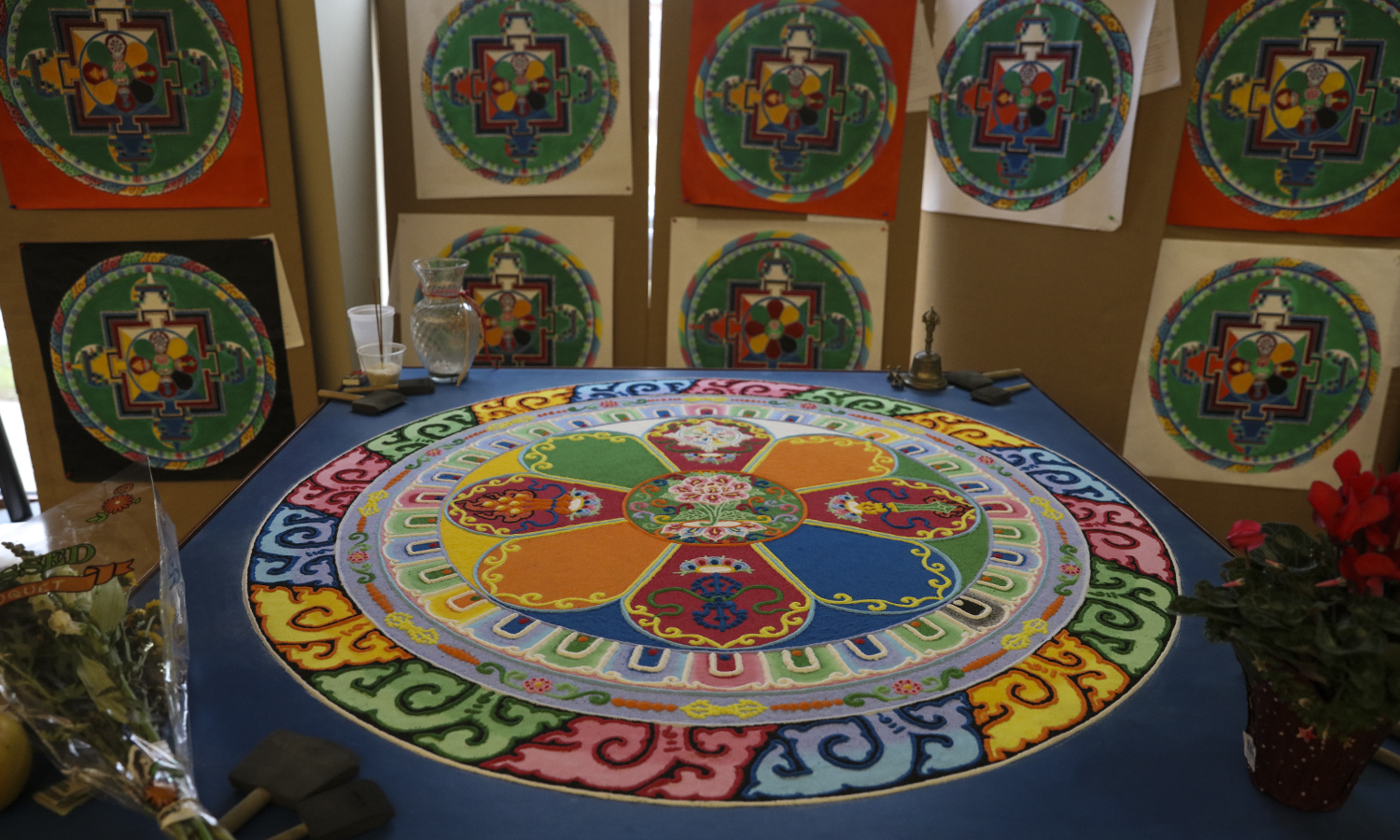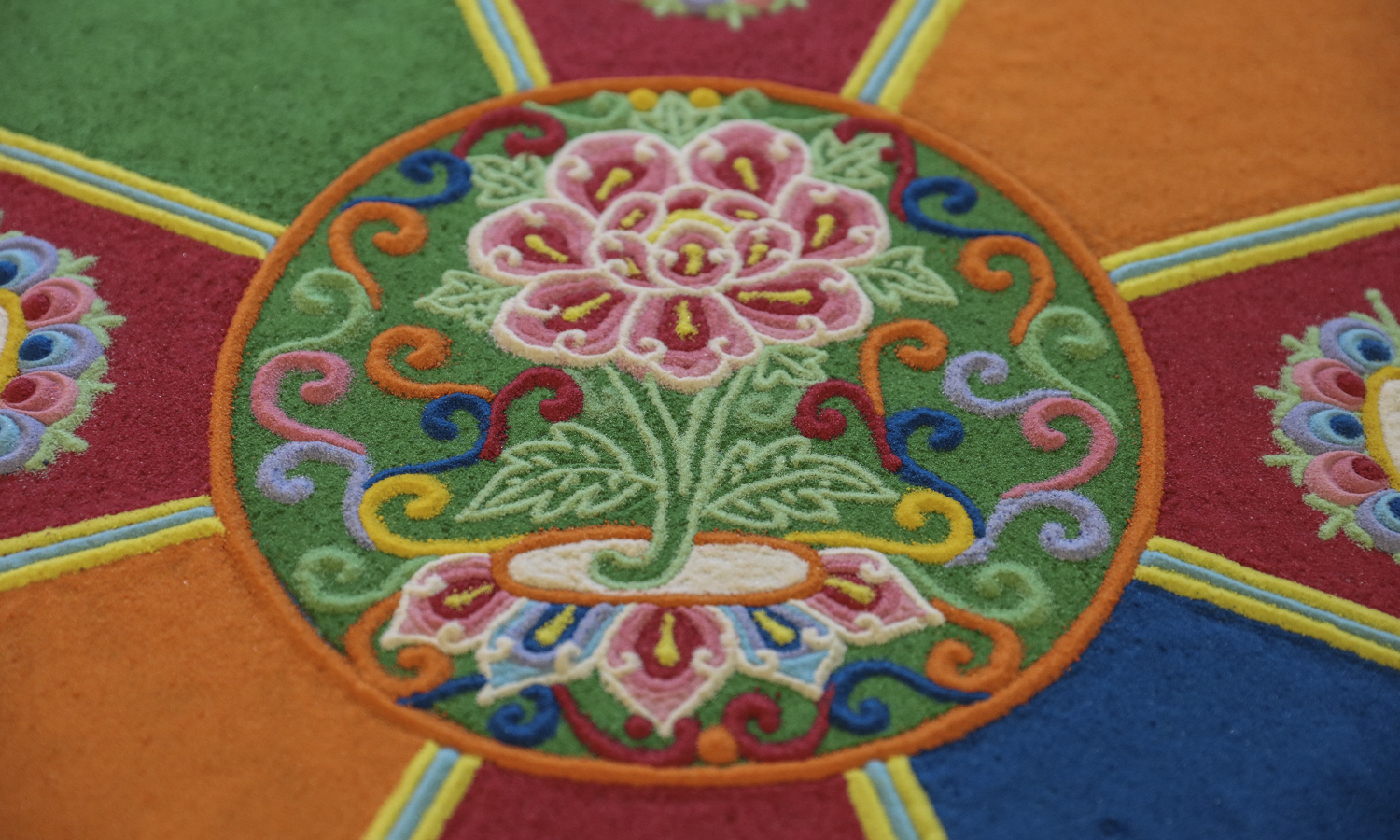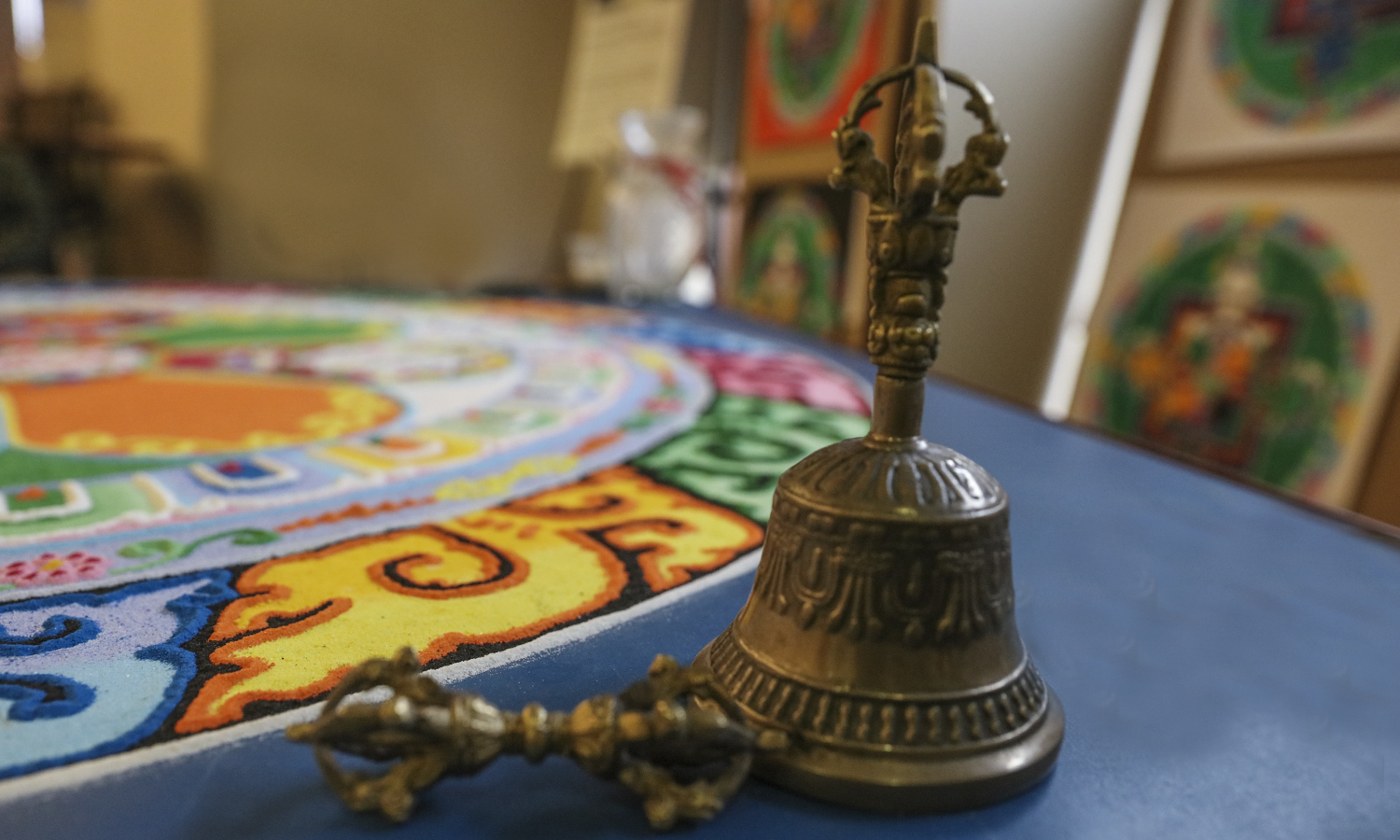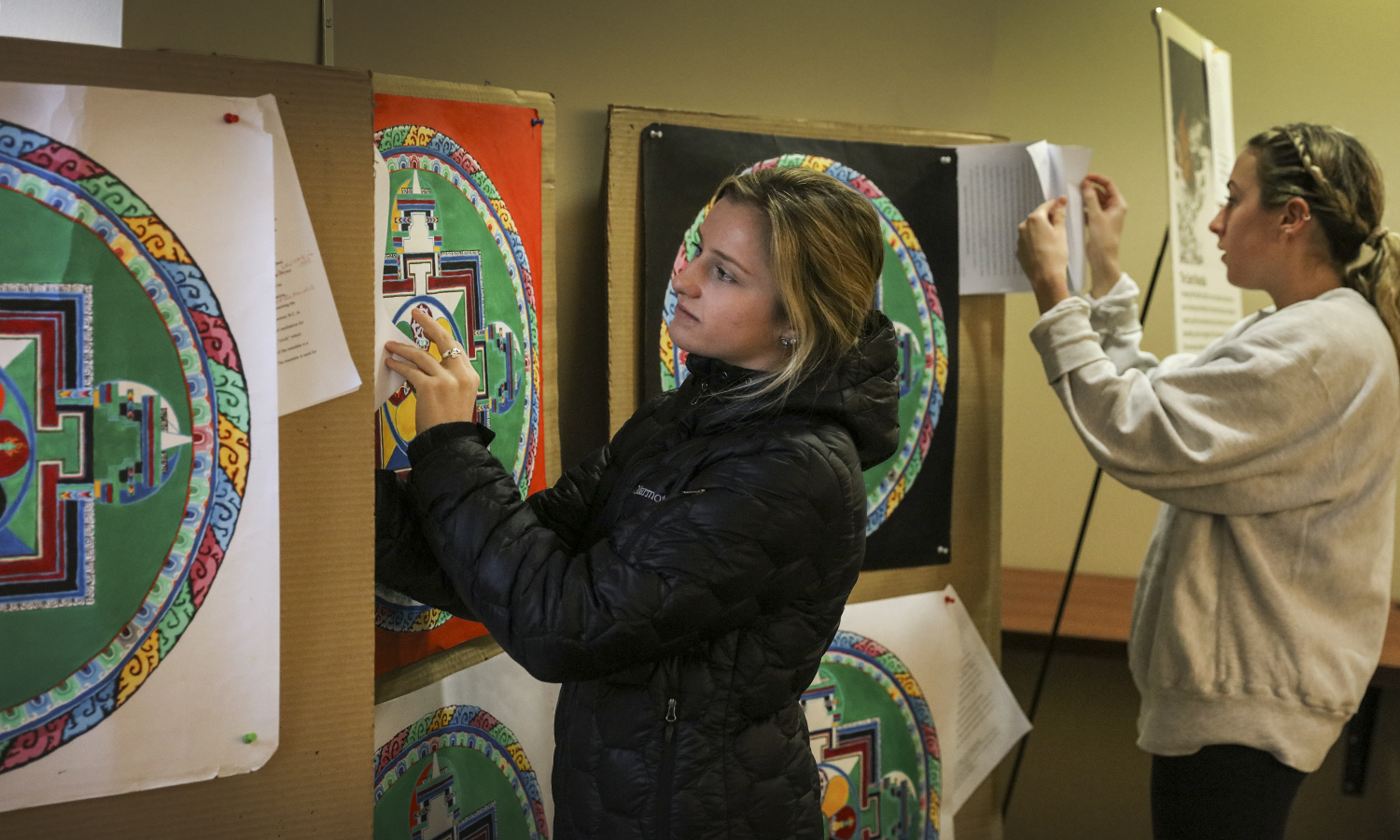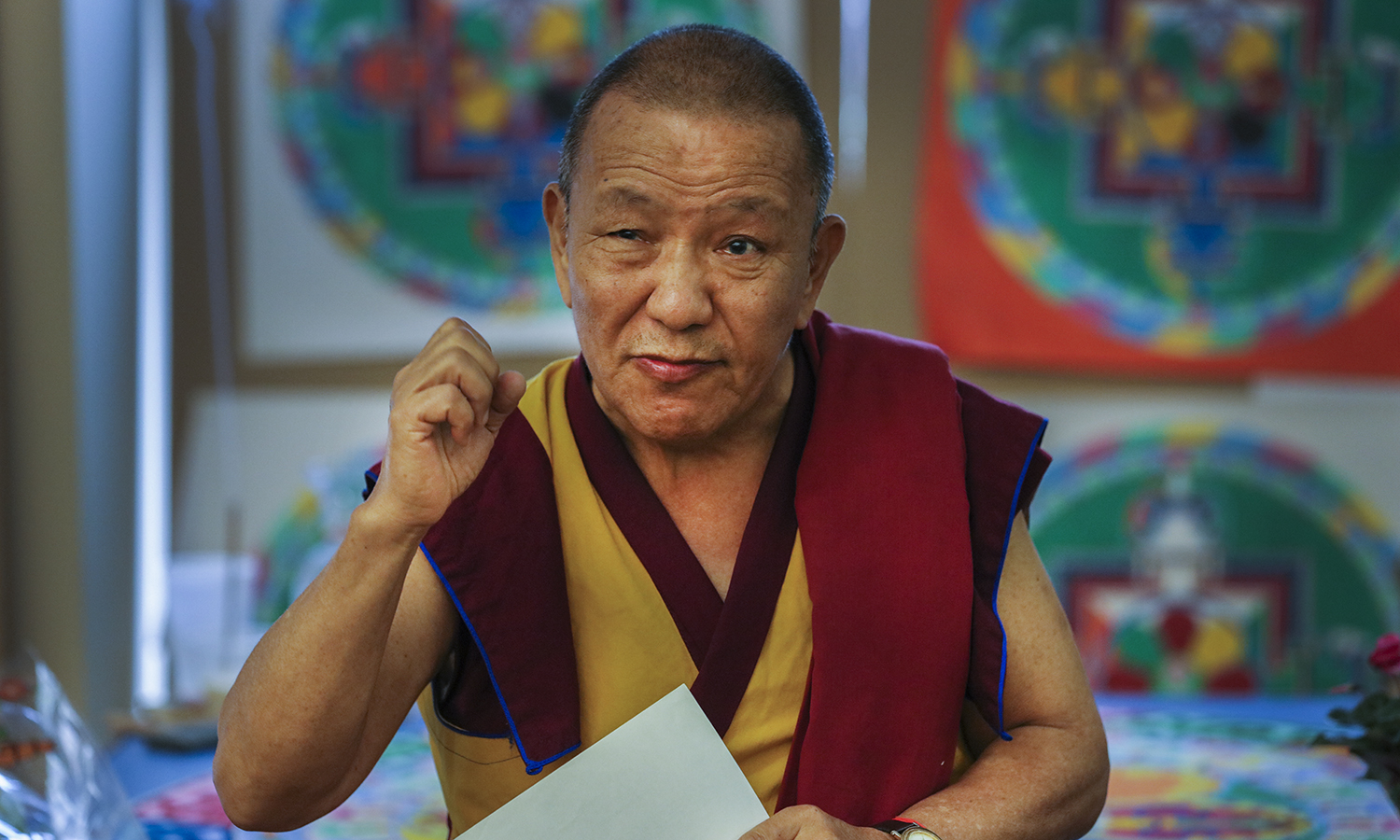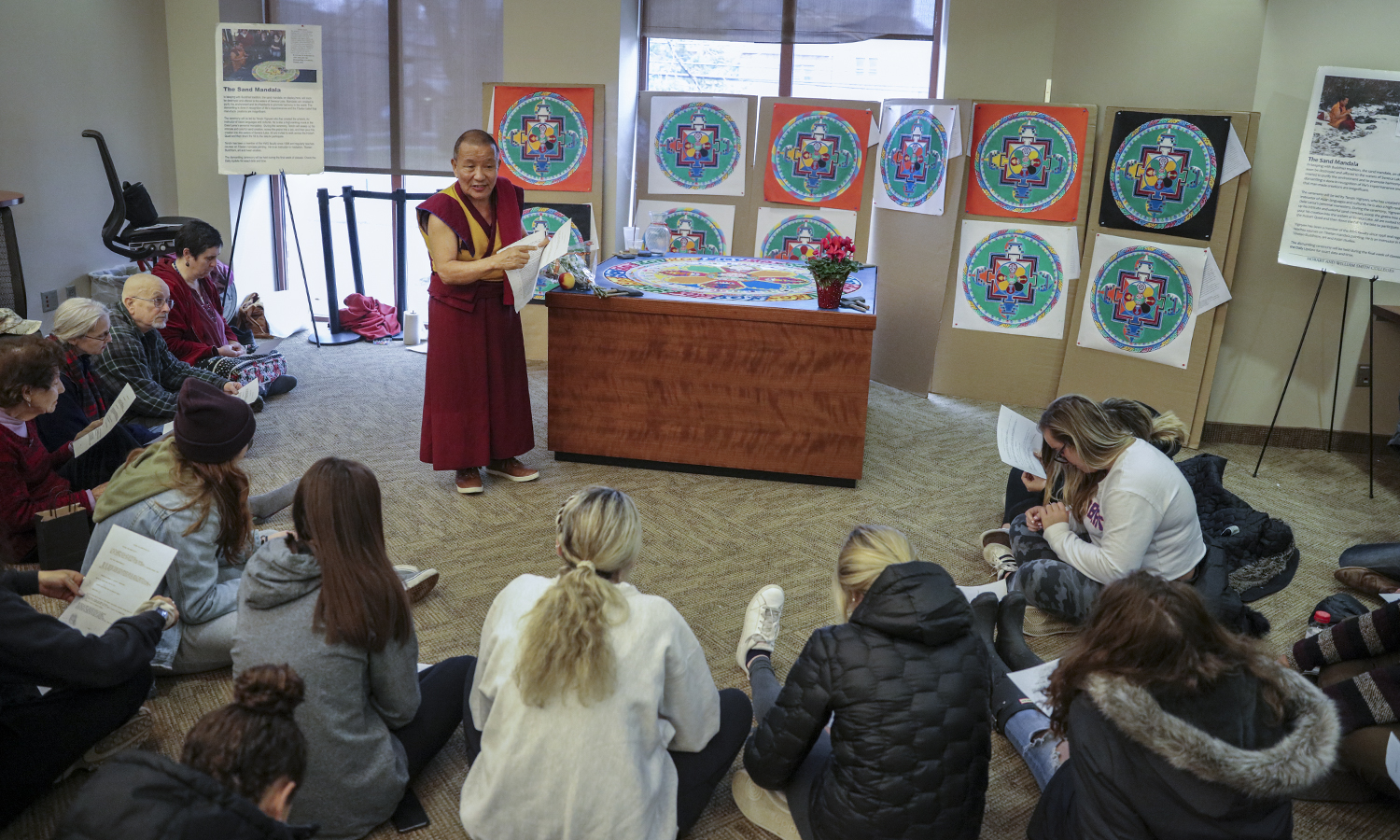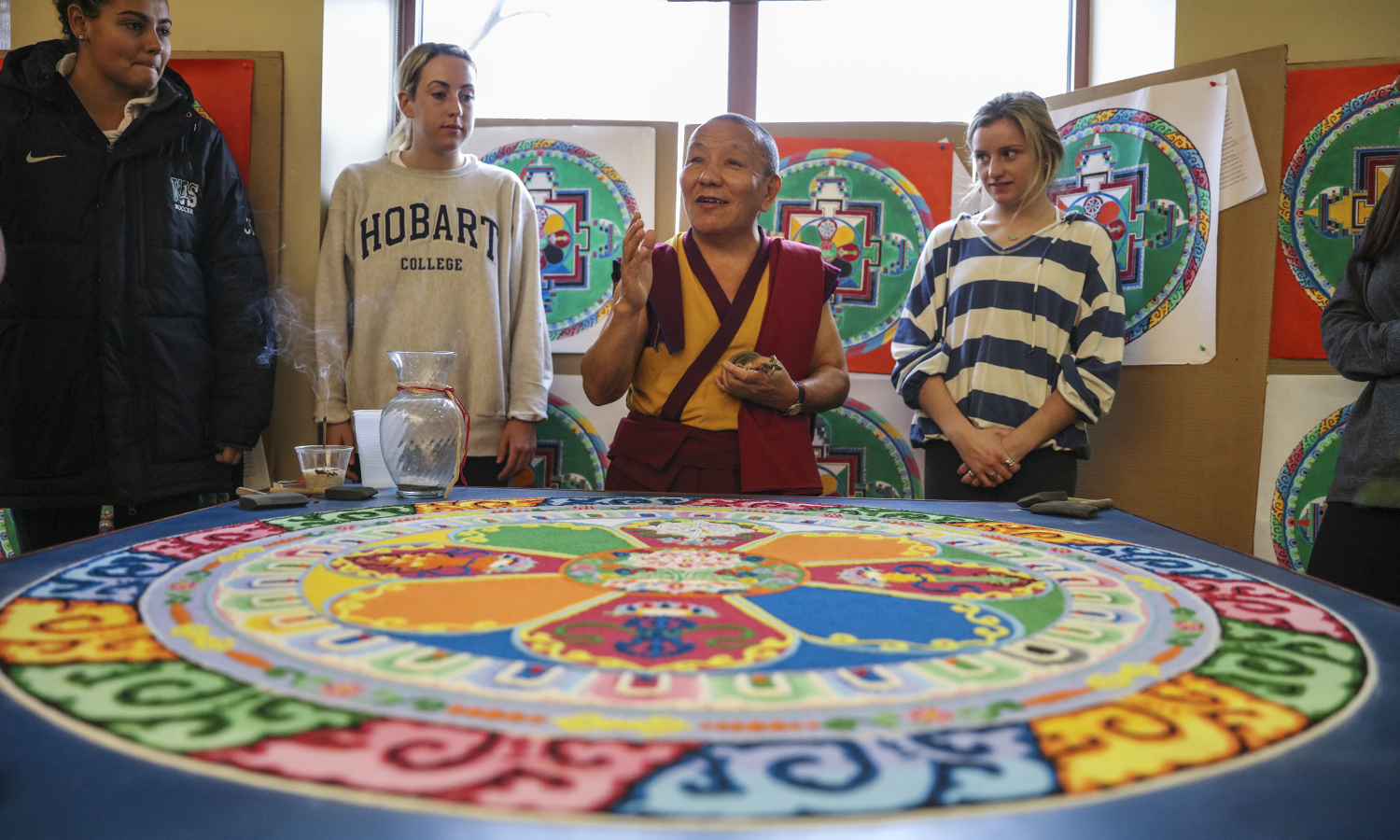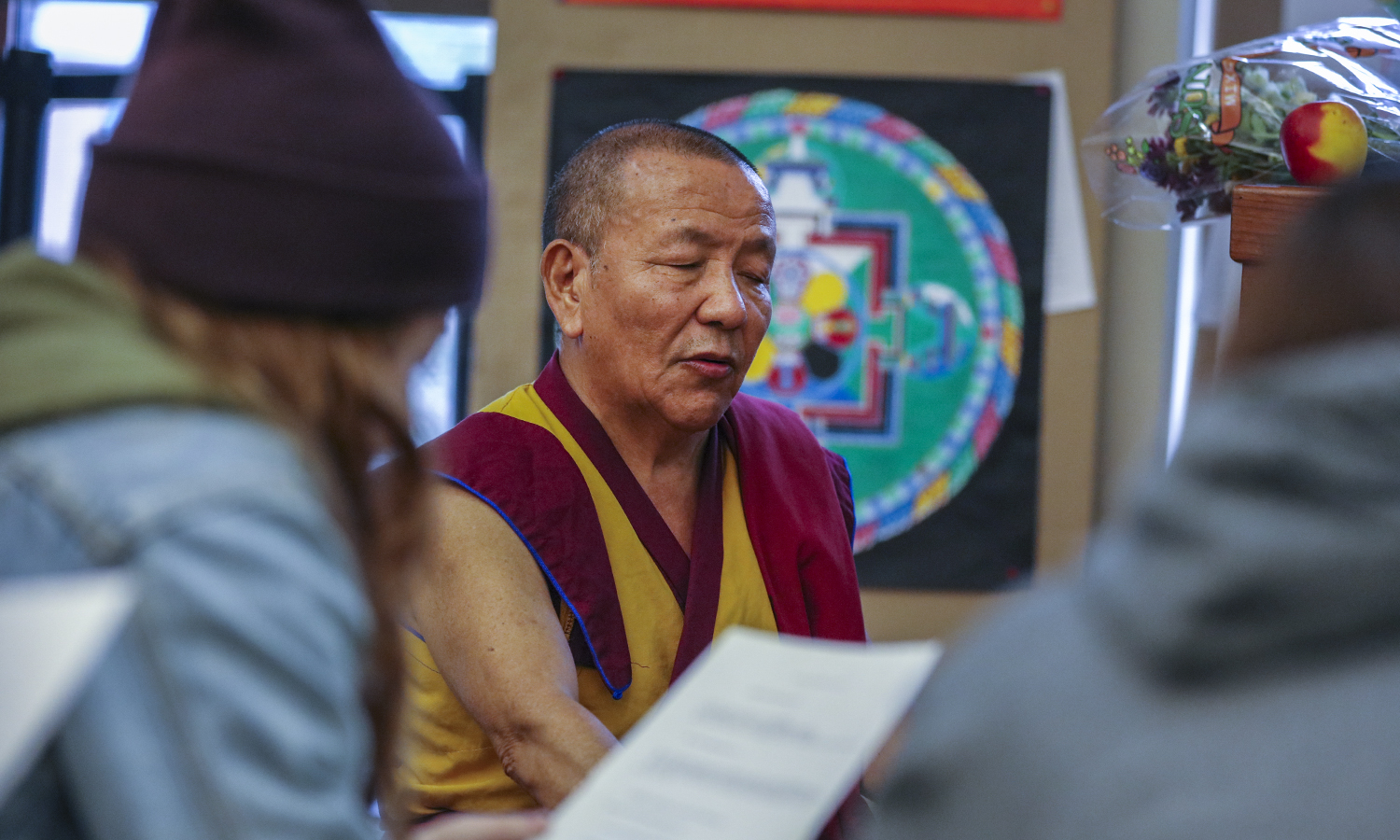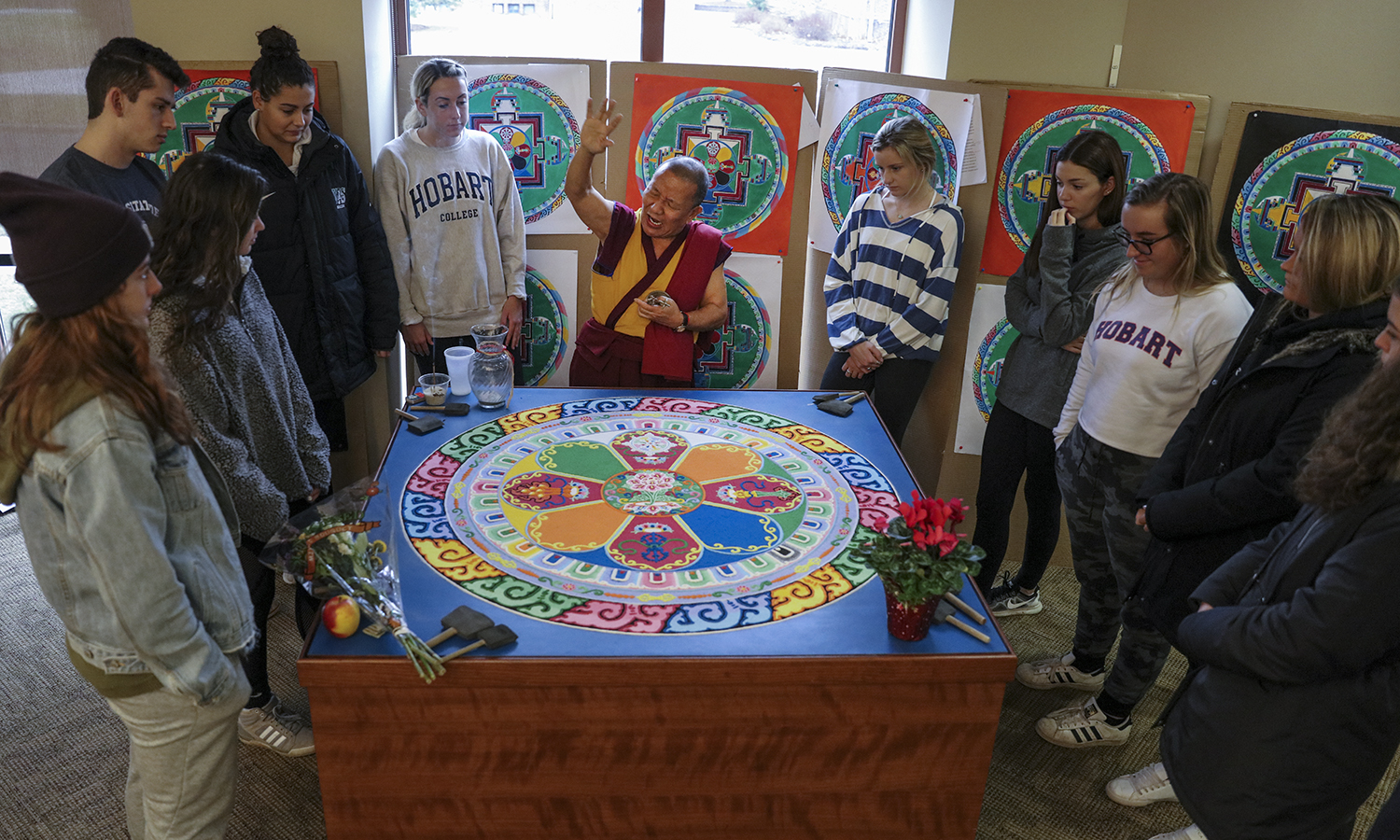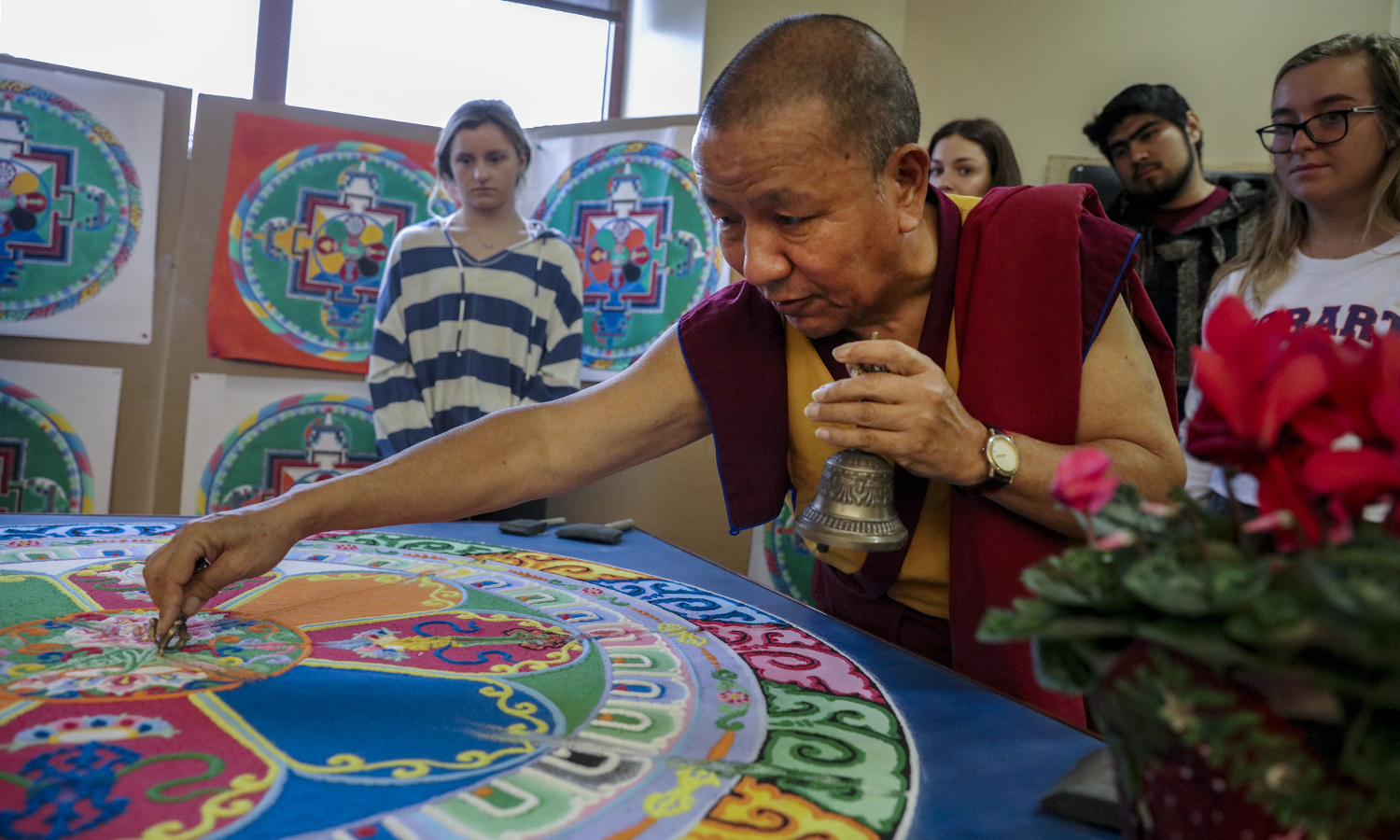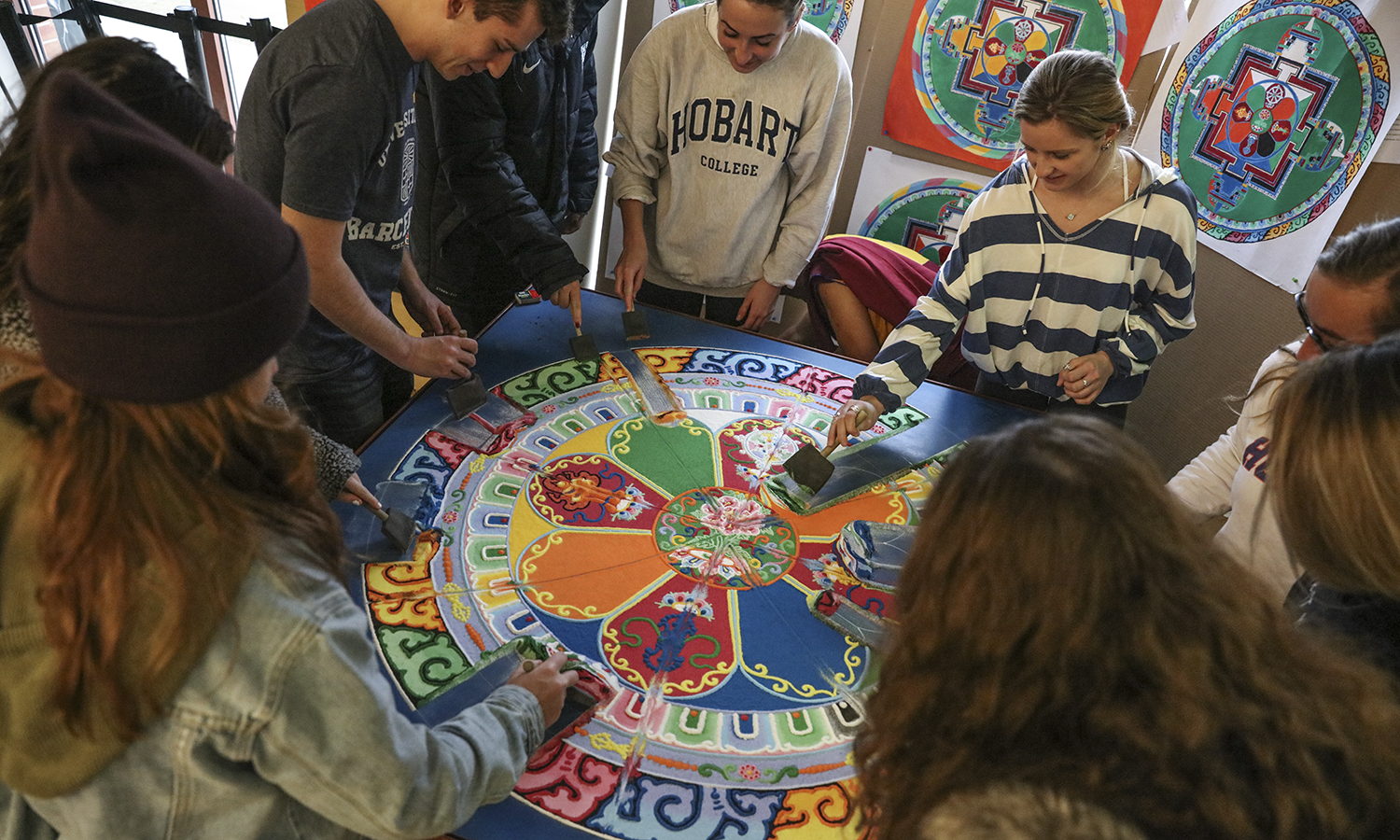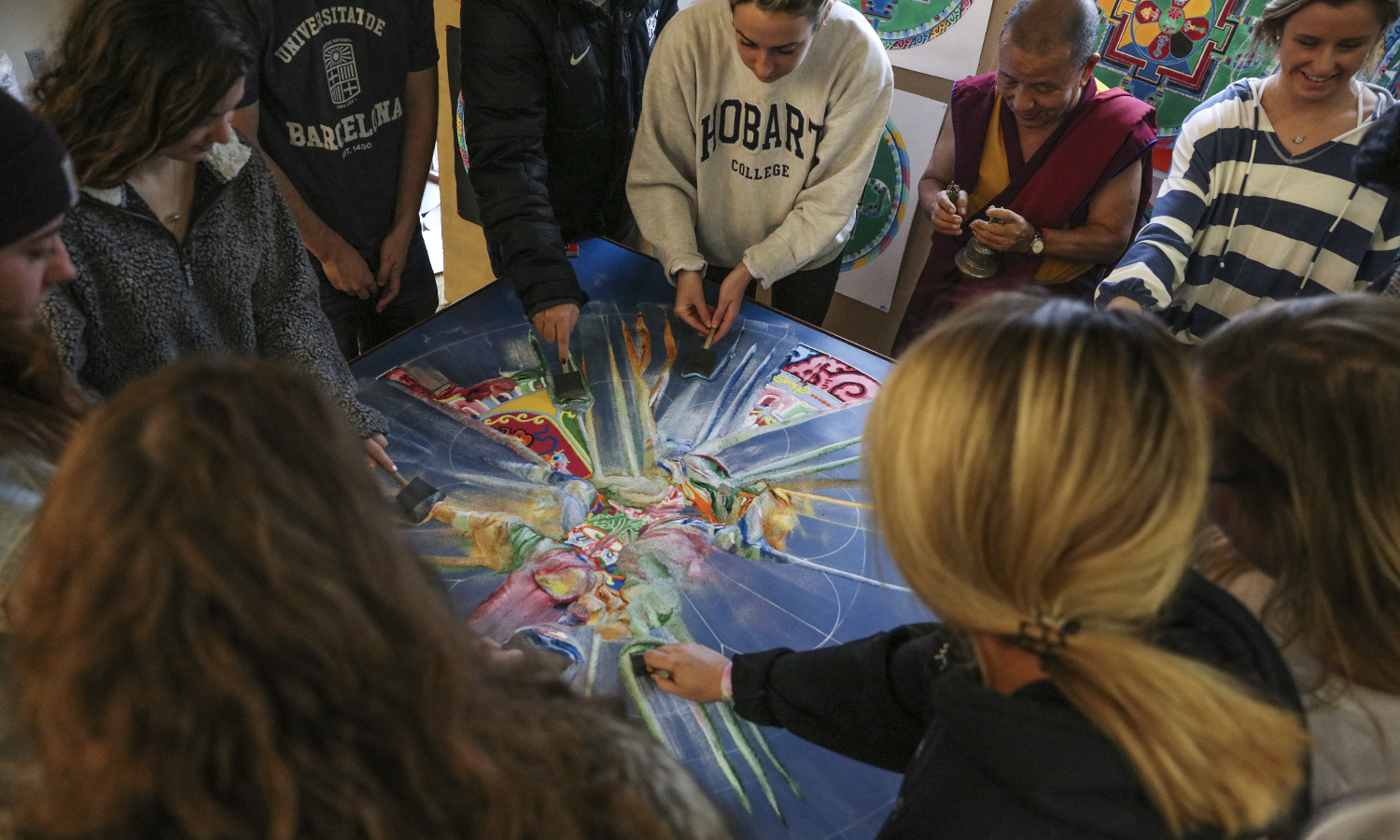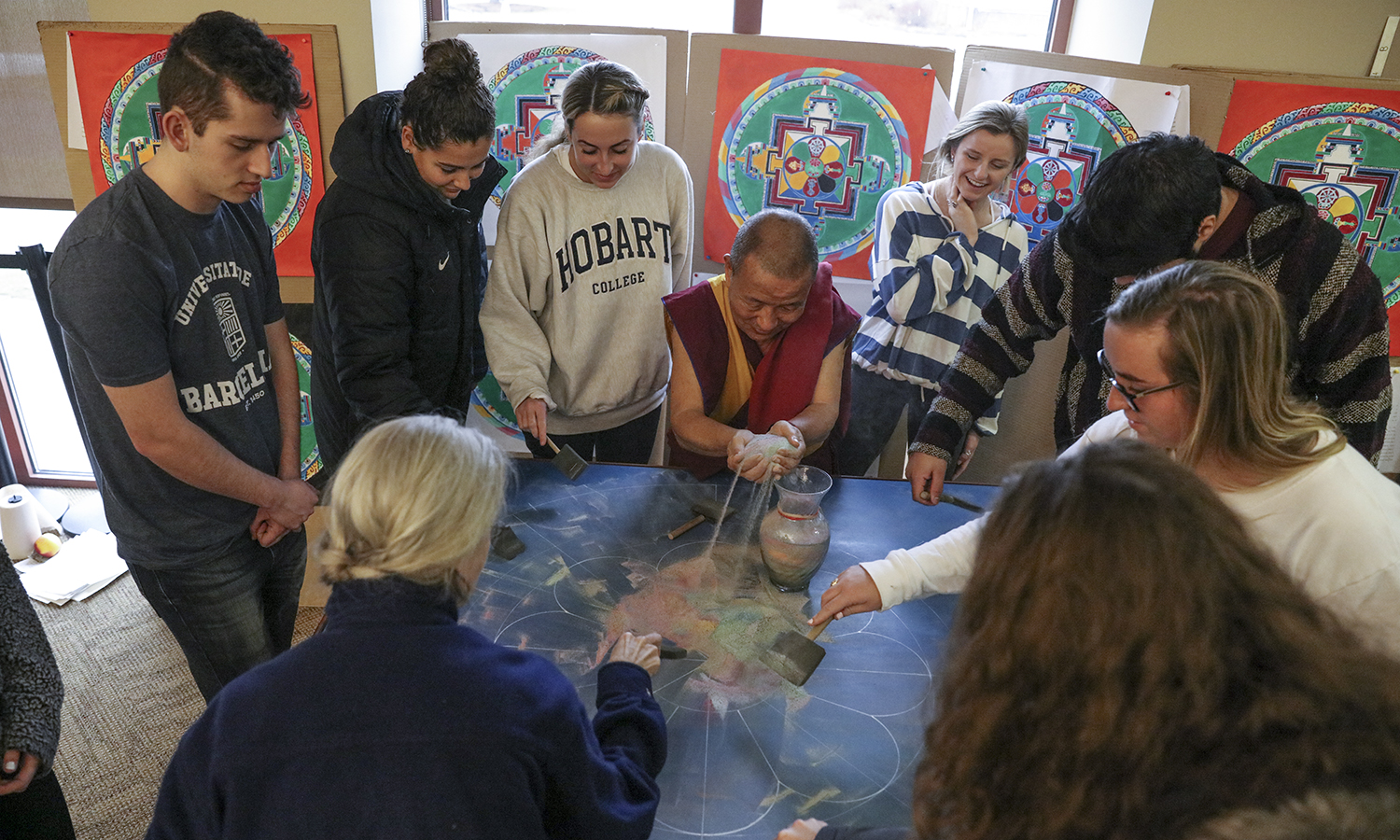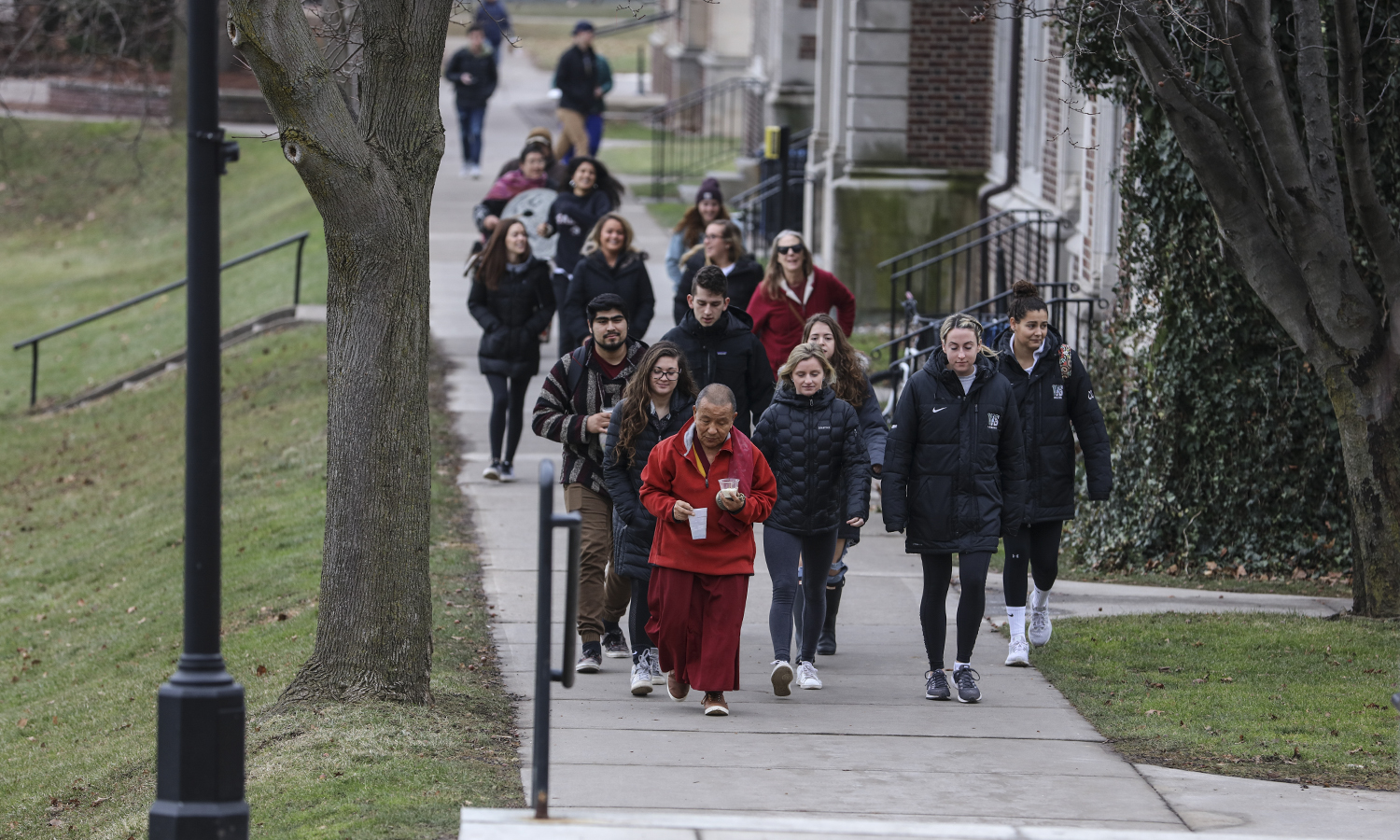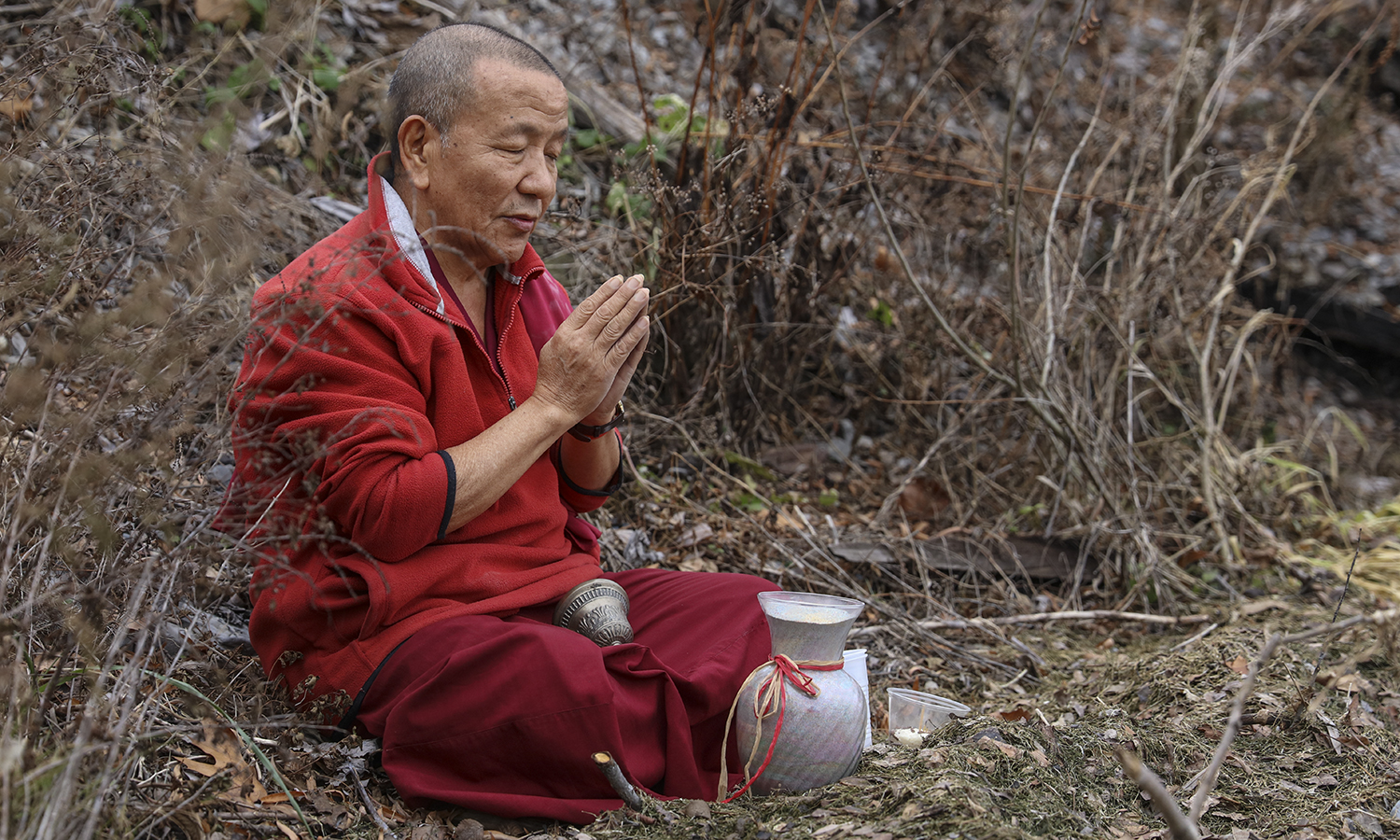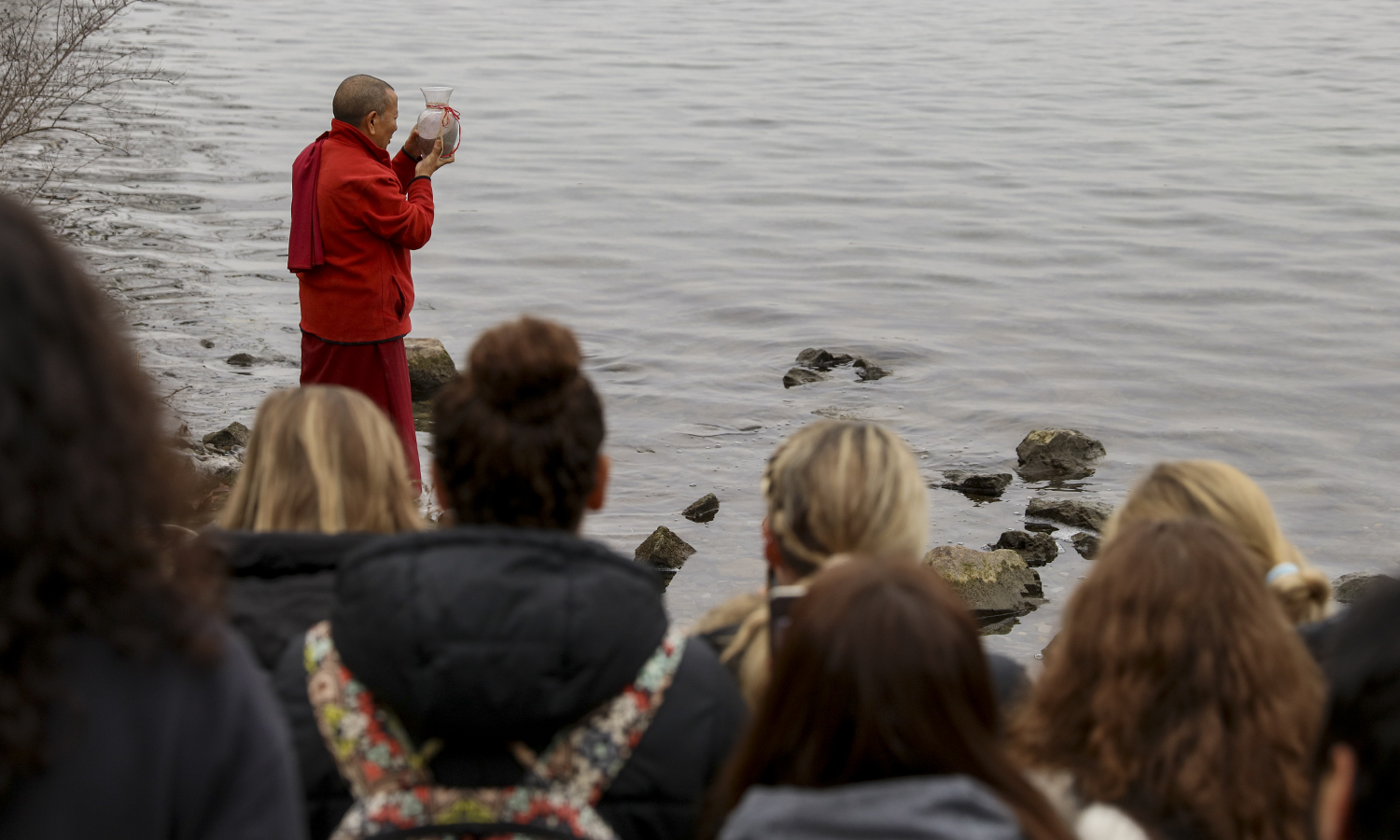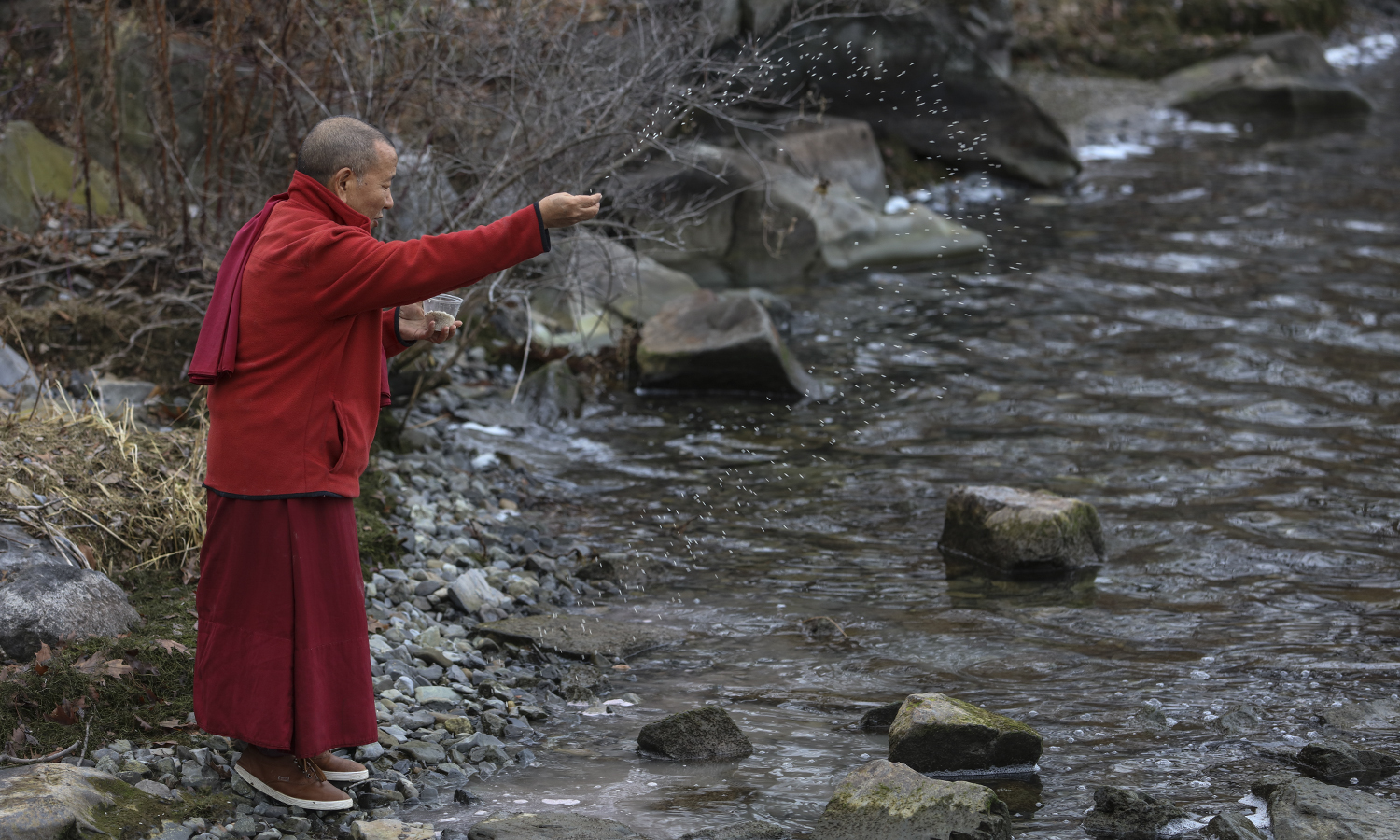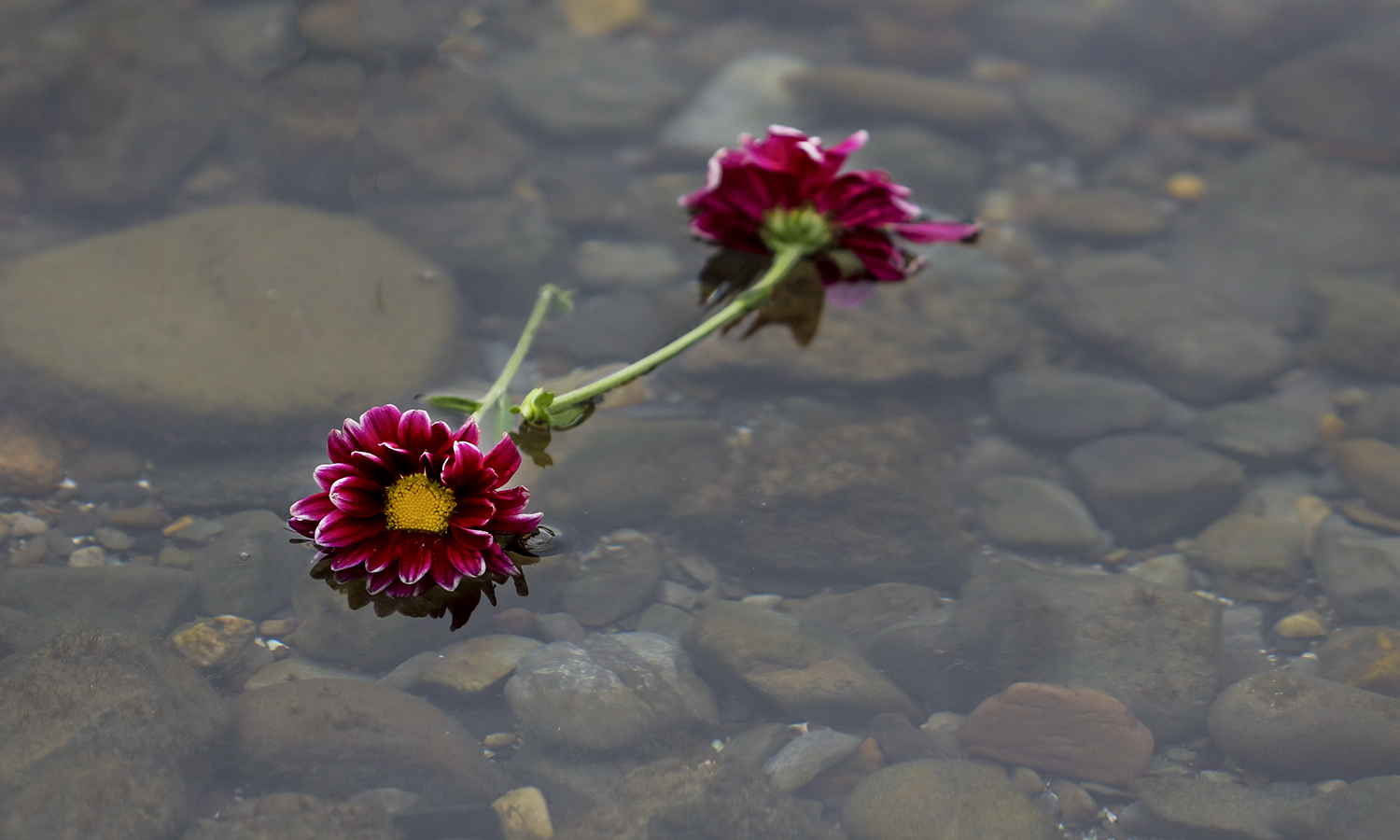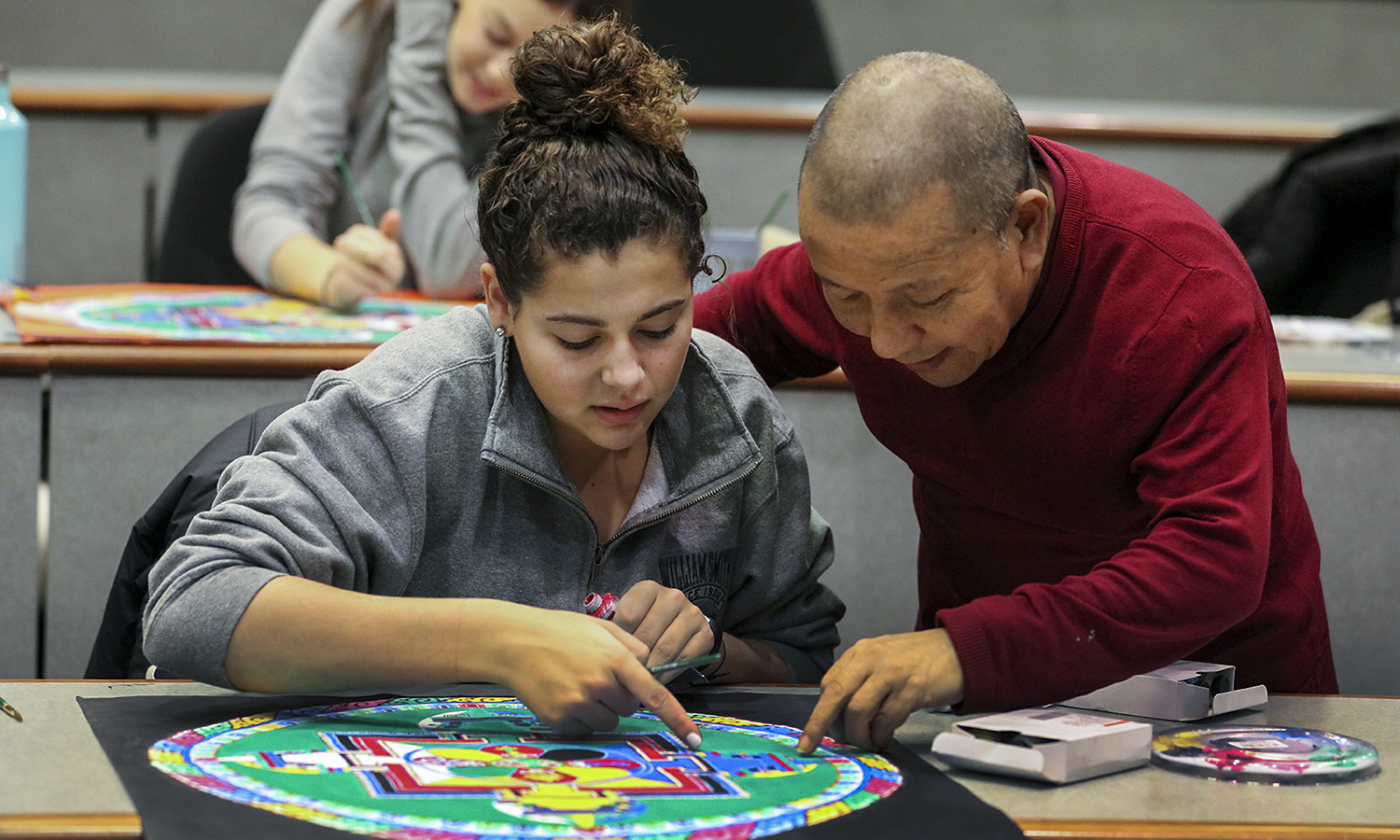
This Week in Photos
This Week In Photos: Tibetan Mandala Dismantling
- In this special edition of This Week in Photos, we follow the Venerable Tenzin Yignyen, instructor of Asian Studies, and his Tibetan Mandala Painting class as they create and dismantle a sand mandala, an ancient Buddhist tradition that symbolizes lifes unwavering march from beginning to end. In the photo above, Yignyen gives feedback to Clare O'Conner '21 on her mandala drawing.
- In class, students are introduced to the world of the Tibetan Buddhist through emersion in history and understanding of the mandalas use. Students learn methods for drawing the geometric outlines, complete an individual painted version, and participate in the creation of a sand mandala.
- Tibetan mandalas are some of the most complex and selfless art forms in the world. They are recognized as expressions of Buddha's enlightened mind, and represent a cosmic or spiritual dwelling place for a deity.
- Mandalas can be constructed from wood, precious jewels, rice, flower and other materials. Sand is considered to be an ideal medium because of the high number of grains required and the great skill necessary to create the mandala.
- According to Tibetan Buddhist history, the purpose, meaning and techniques involved in the spiritual art of the sand mandala painting were taught by Buddha Sakyamuni in the sixth century B.C. in India.
- Students read their classmates reflections on the choices in color and shape behind their mandala and the experience of creating the piece.
- Ordained as a Buddhist monk by Tenzin Gyatso, the 14th Dalai Lama, Tenzin Yignyen is a member of the Dalai Lamas personal monastery. Yignyen has been invited to construct and lecture on mandalas across the country and holds a Master of Sutra and Tantra degree with highest honors, which is equivalent to a Ph.D.
- Students in the Tibetan Mandala Painting course and members of the local Buddhist community gather with the Venerable Tenzin Yignyen before he conducts the traditional dismantling ceremony.
- The Venerable Tenzin Yignyen begins the traditional mandala dismantling ceremony in the William A. Baron Jr. 51 Multimedia Lab.
- The Venerable Tenzin Yignyen speaks about the intricacies involved in making the traditional sand mandala.
- Mandalas are created for initiation rituals, meditations and to purify and promote harmony in the world.
- The Venerable Tenzin Yignyen asks for the deities' healing blessings during the ceremony.
- Venerable Tenzin Yignyen apportions the mandala.
- Students begin to wipe away the mandala.
- Mandalas are created in the tradition of selflessness and non-import, and are therefore disassembled upon completion.
- After the grains of sand have been collected, they are then offered to the closest body of water for the benefit of marine life, the environment and all sentient beings.
- The Venerable Tenzin Yignyen leads a procession of students and community members to the shore of Seneca Lake for the conclusion of the dismantling ceremony.
- The Venerable Tenzin Yignyen says students who take the mandala course learn much more than Buddhist history, art and philosophy. In the classes, Yignyen shares the principles for living a balanced, peaceful, compassionate and loving life.
- Encircled by students and community members, the Venerable Tenzin Yignyen concludes the sacred practice of creating and dismantling a Tibetan Buddhist sand mandala.
- For centuries the ceremony was shared only among Buddhist practitioners. The 14th Dalai Lama helped promote Buddhism by allowing the creation of mandalas to be experienced around the world. The Venerable Tenzin Yignyen has been part of the HWS community since 1999.
- Venerable Tenzin Yignyen releases the sand in Seneca Lake.
- In a ceremonial gesture, the Venerable Tenzin Yignyen throws grains of rice into the water of Seneca Lake.
- Conducted by the Venerable Tenzin Yignyen, the lakeside ceremony is a consequential moment that captures the essence of the Tibetan-born monks important educational work at the Colleges.


